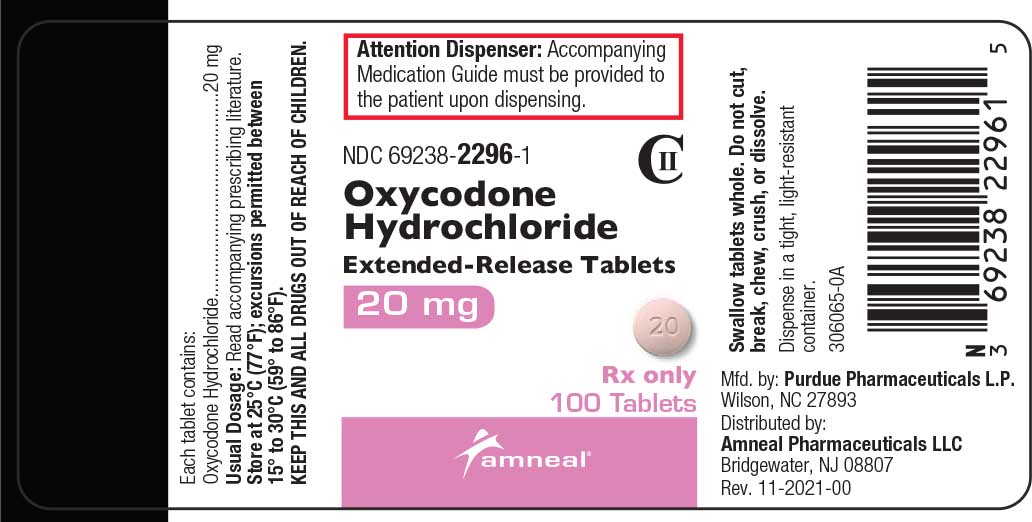Discovering the Different Clinical Usages and Impacts of Oxycodone suffering Monitoring
Oxycodone, a potent opioid analgesic, has actually long been a foundation in the monitoring of moderate to extreme pain. Let's untangle the multifaceted landscape of oxycodone in pain monitoring to gain a detailed understanding into its utility and impact.

Pain Relief System of Oxycodone
Oxycodone exerts its analgesic results mainly with its actions on the central nerve system, especially by binding to opioid receptors in the mind and back cord. By binding to these receptors, oxycodone changes the assumption of pain, causing a decrease hurting experience. Buy Oxycodone online. The medicine acts as an agonist, activating mu, delta, and kappa opioid receptors, which are distributed throughout the central nerve system. This activation hinders the launch of natural chemicals involved in discomfort signaling, such as material P and glutamate, while additionally advertising the release of inhibitory neurotransmitters like gamma-aminobutyric acid (GABA)
In addition, oxycodone not just modulates discomfort assumption however also influences psychological reactions to pain. The medicine can cause feelings of ecstasy and leisure, adding to its high potential for misuse. Comprehending the precise device of oxycodone's action on the main nerve system is essential for medical care service providers to maximize its usage in pain management while reducing the dangers connected with its possibility for addiction and abuse.
Types of Pain Problems Treated
In the world of pain monitoring, different kinds of pain conditions gain from the targeted analgesic effects of drugs such as oxycodone. Oxycodone is typically suggested for the treatment of modest to severe discomfort, making it a valuable tool in taking care of severe discomfort complying with surgeries, injuries, or medical treatments. Additionally, oxycodone is used in persistent discomfort conditions such as cancer-related discomfort, neuropathic pain, and musculoskeletal pain problems like osteoarthritis or fibromyalgia.
Moreover, oxycodone works in managing development discomfort episodes in clients currently on around-the-clock opioid therapy. Innovation discomfort refers to abrupt, intense flares of pain that happen regardless of recurring pain administration. By supplying fast discomfort relief, oxycodone helps enhance the lifestyle for people experiencing problems like cancer cells, where pain control is crucial for general health.
In palliative care settings, oxycodone plays an important function in making sure convenience and self-respect for terminally ill clients experiencing extreme pain. Its effectiveness and adaptability in dosing make it a beneficial option for customizing discomfort management to individual client needs across a spectrum of pain problems.
Prospective Side Results and Threats
Typically observed in people using medications for discomfort management, potential side effects and dangers associated with these therapies need cautious consideration and monitoring by healthcare carriers. Oxycodone, a powerful opioid typically prescribed for modest to extreme pain, can lead to different side results.
Moreover, the lasting use of oxycodone can cause resistance, where higher dosages are required to achieve the very same degree of discomfort relief. This can potentially boost the threat of overdose and addiction - Buy Oxycodone online. Individuals with a background of substance abuse or psychological health problems go to a higher risk of experiencing these negative results
Healthcare service providers must carefully analyze the dangers and advantages of oxycodone therapy for every private client and monitor them very closely to minimize potential negative effects and threats related to its usage.
Dose Standards and Management
Provided the prospective side results and dangers connected with opioid drugs like oxycodone, healthcare companies have to develop clear dosage standards and correct management procedures to make certain effective and secure discomfort administration for patients. The dose of oxycodone should be individualized based upon variables such as the individual's age, weight, case history, and the intensity of discomfort. Usually, the initial dose for opioid-naïve people is 5-15 mg every 4 to 6 hours as needed for discomfort. It is important to start with the most affordable reliable dosage and titrate gradually to accomplish sufficient pain alleviation while reducing side effects.
Doctor need to routinely reassess the individual's discomfort degrees and adjust the dose appropriately. It is vital to keep track of for signs of opioid abuse or dependancy throughout treatment. Oxycodone is generally available in immediate-release and extended-release formulations, and the dosing schedules vary between both. Clients ought to be informed on the proper management techniques, prospective side results, and the relevance of not exceeding the suggested dosage to prevent damaging outcomes.

Patient Education And Learning and Tracking
Patients prescribed oxycodone for pain management need to get detailed education and learning on correct drug usage and need to undergo regular tracking to guarantee efficient and risk-free treatment end results. Client education and learning plays an essential duty in the risk-free use of oxycodone, as it empowers individuals to comprehend the drug's prospective advantages, dangers, and side effects.
Normal tracking is important to examine the patient's response to oxycodone treatment, identify any type of arising adverse effects or complications, and assess the demand for dosage adjustments. This tracking might consist of frequent follow-up consultations, pee medication screenings to monitor adherence and detect prospective abuse, and routine reviews of the treatment plan to make sure ideal discomfort administration end results while lessening the risk of opioid-related damage. By providing thorough education and article source learning and applying normal surveillance protocols, health care companies can advertise the secure and reliable use of a knockout post oxycodone hurting management.
Final Thought
Finally, oxycodone is a powerful opioid medicine commonly utilized in discomfort management for different conditions. Its device of activity entails binding to opioid receptors in the mind and spine to relieve pain. While reliable in supplying pain relief, oxycodone is related to potential adverse effects and threats, necessitating cautious dosage guidelines, management, client education, and monitoring to guarantee efficient and risk-free use in clinical technique.
In the world of discomfort monitoring, various kinds of discomfort problems profit from the targeted analgesic results of medicines such as oxycodone. Oxycodone is commonly recommended for the therapy of moderate to serious pain, making it a useful device in taking care of acute discomfort adhering to surgeries, injuries, or clinical procedures. In addition, oxycodone is made use of in persistent discomfort problems such as cancer-related discomfort, neuropathic discomfort, and right here bone and joint discomfort disorders like osteo arthritis or fibromyalgia.
Development discomfort refers to abrupt, intense flares of discomfort that happen in spite of continuous pain monitoring. By supplying rapid pain relief, oxycodone aids improve the quality of life for individuals suffering from conditions like cancer, where discomfort control is important for overall well-being.